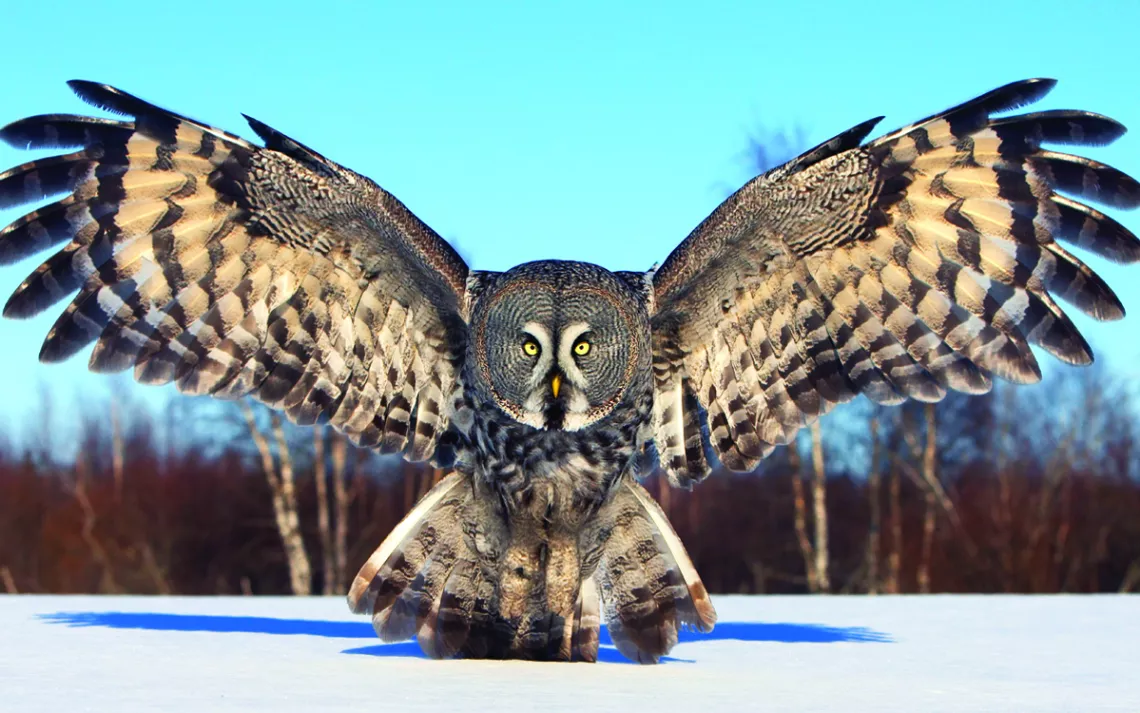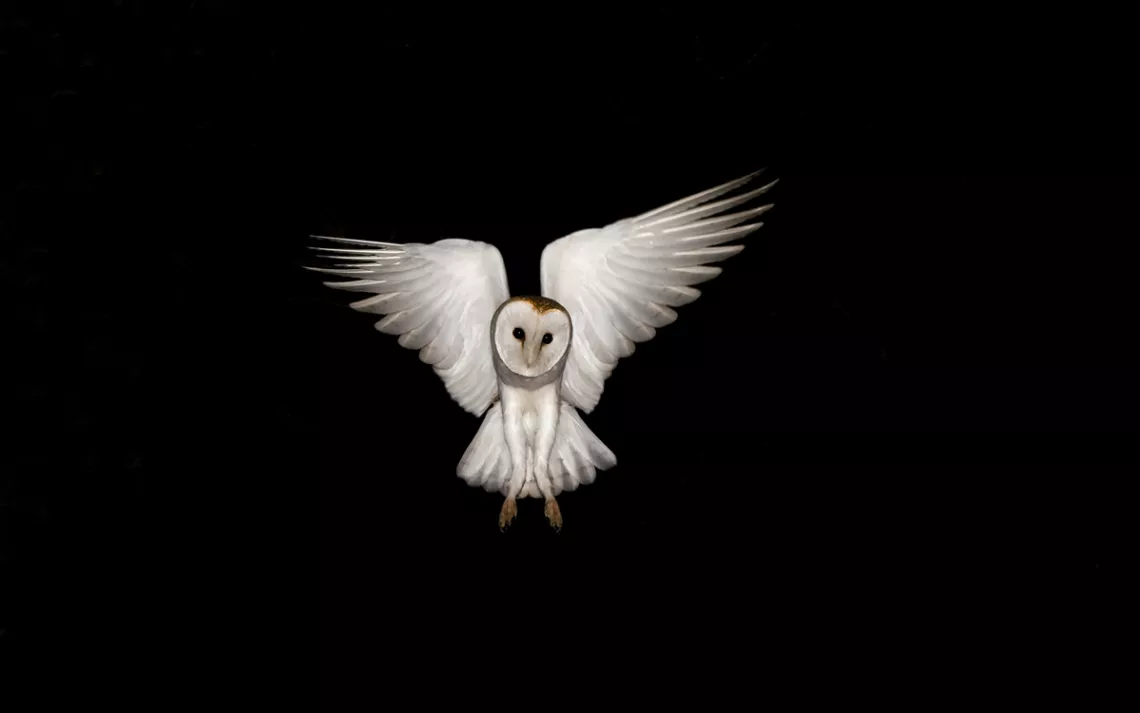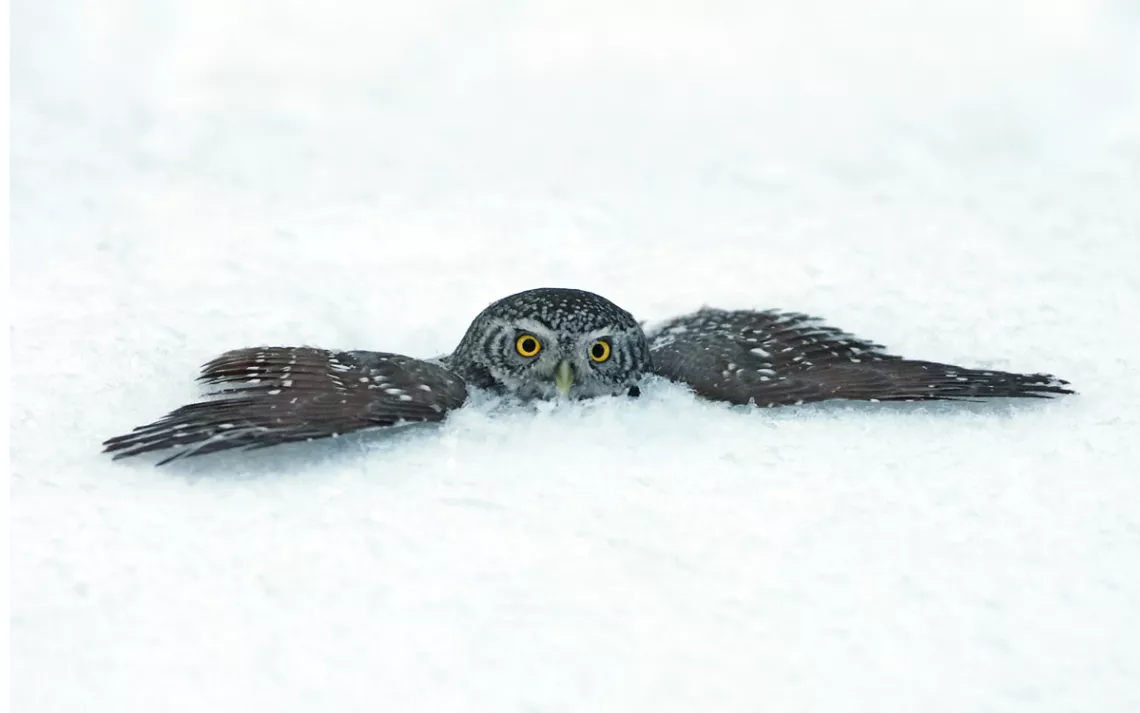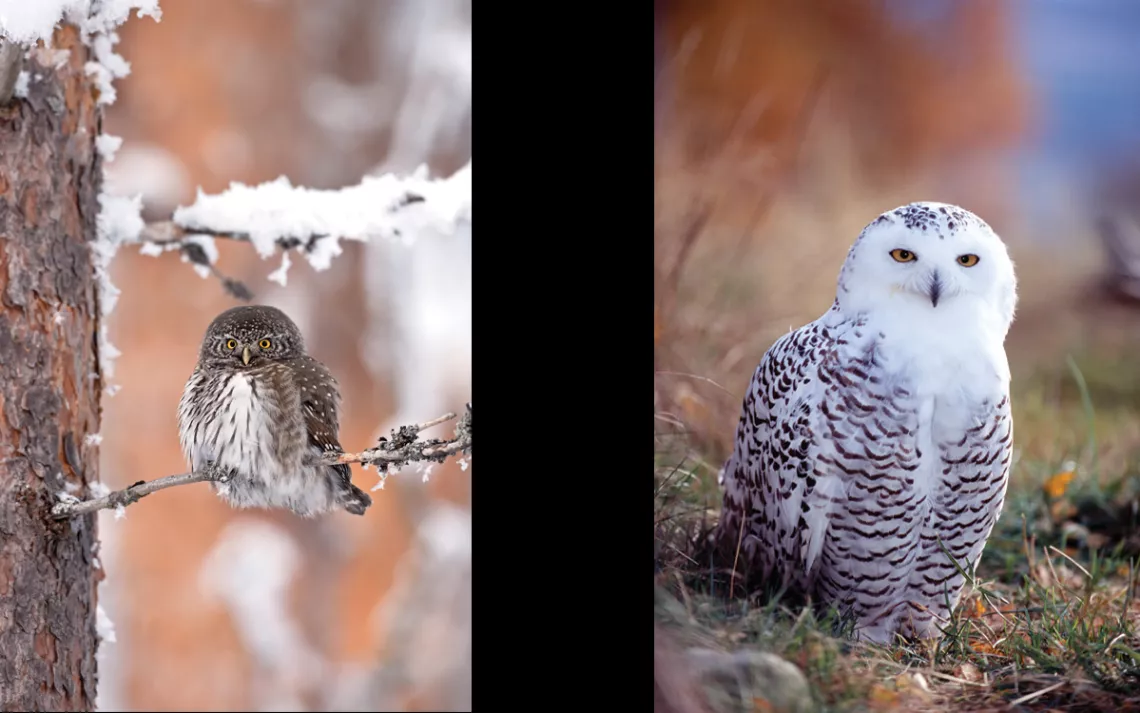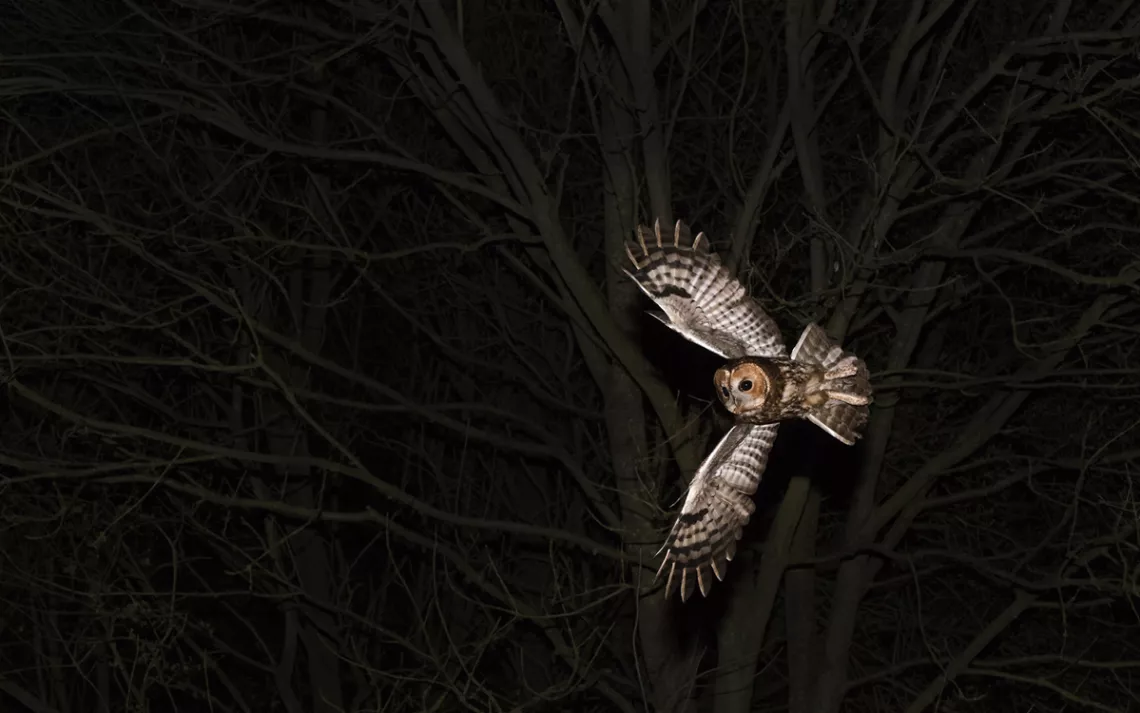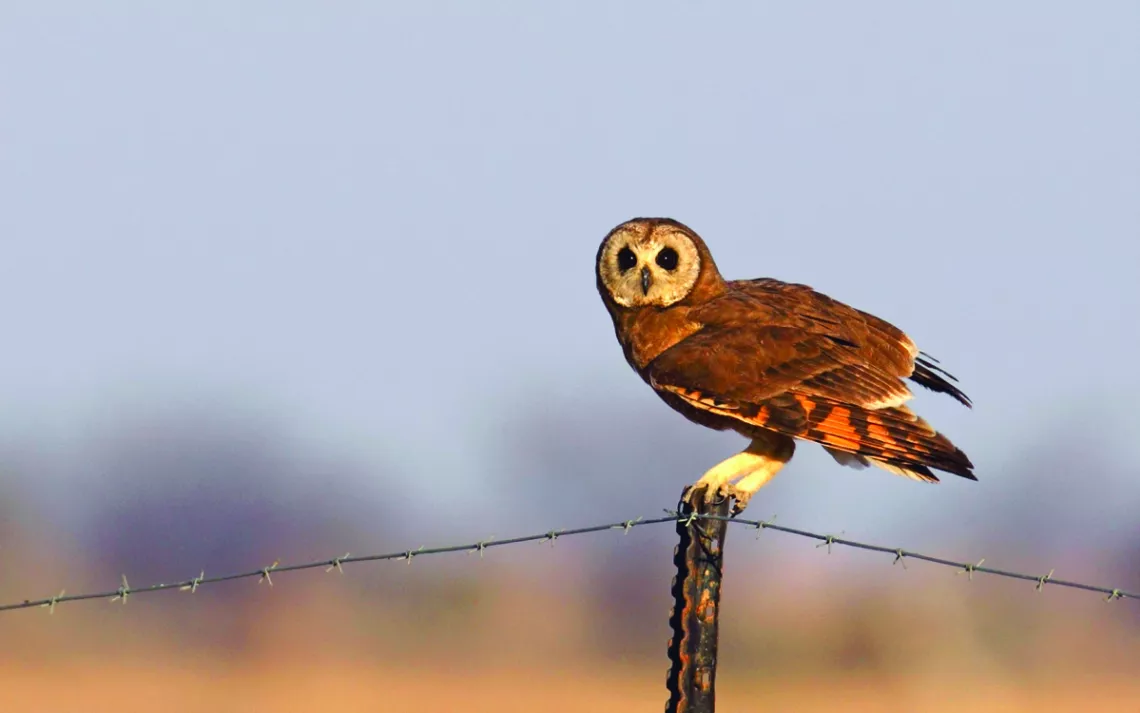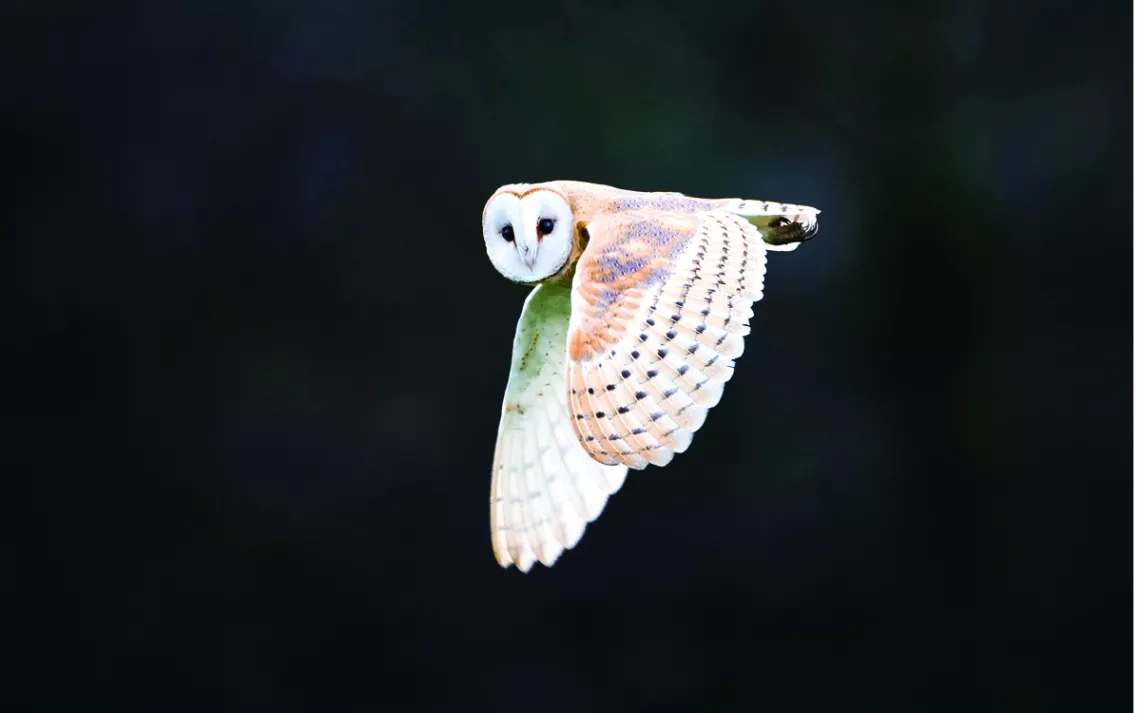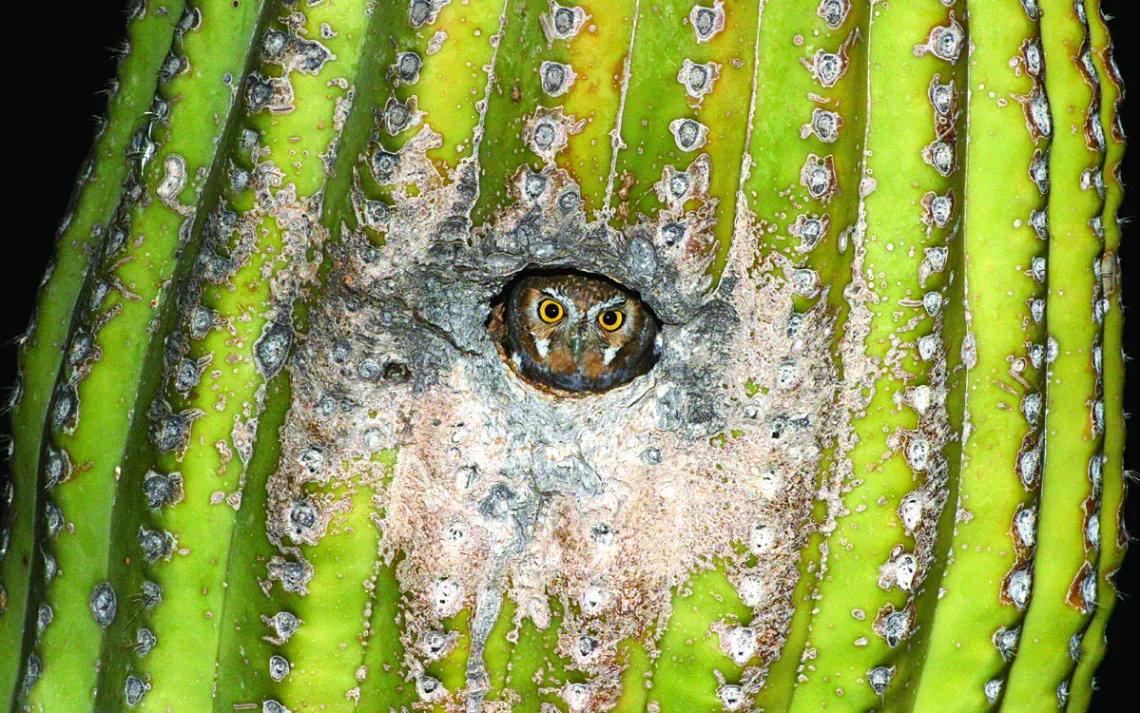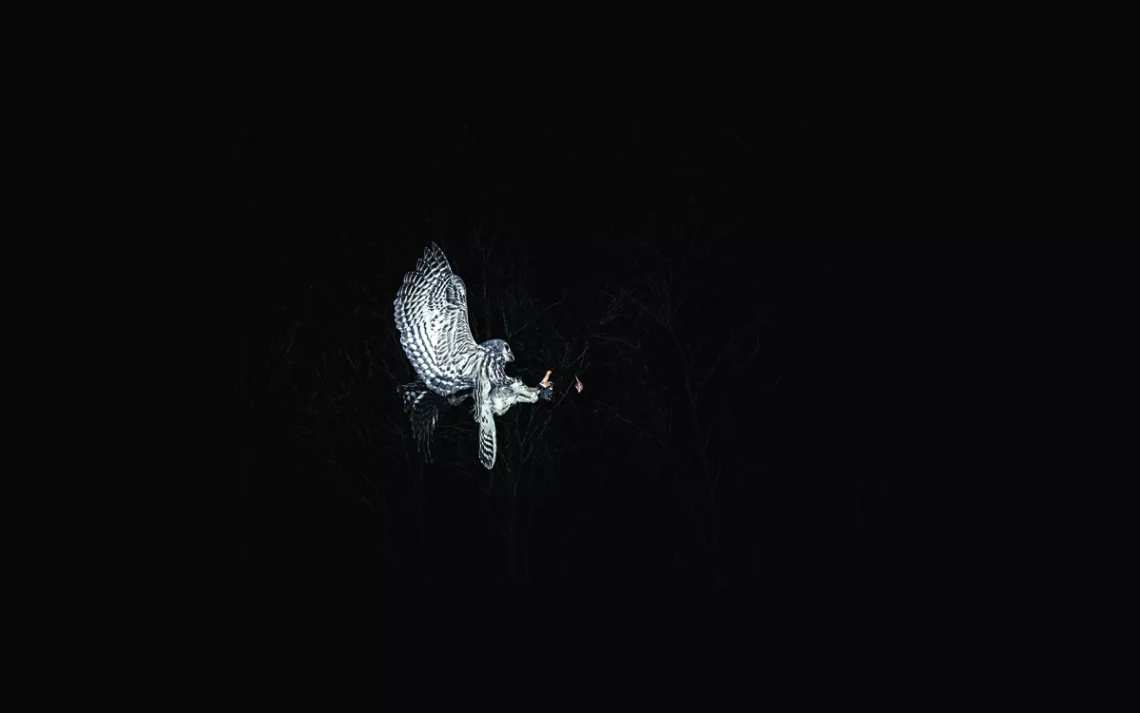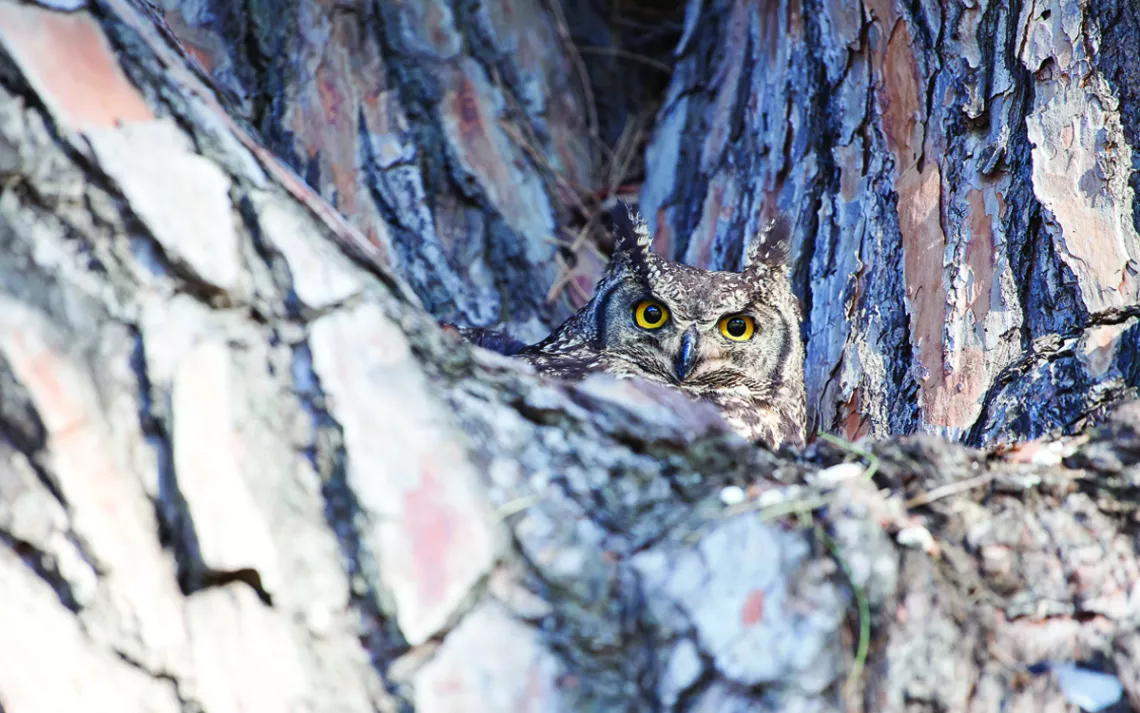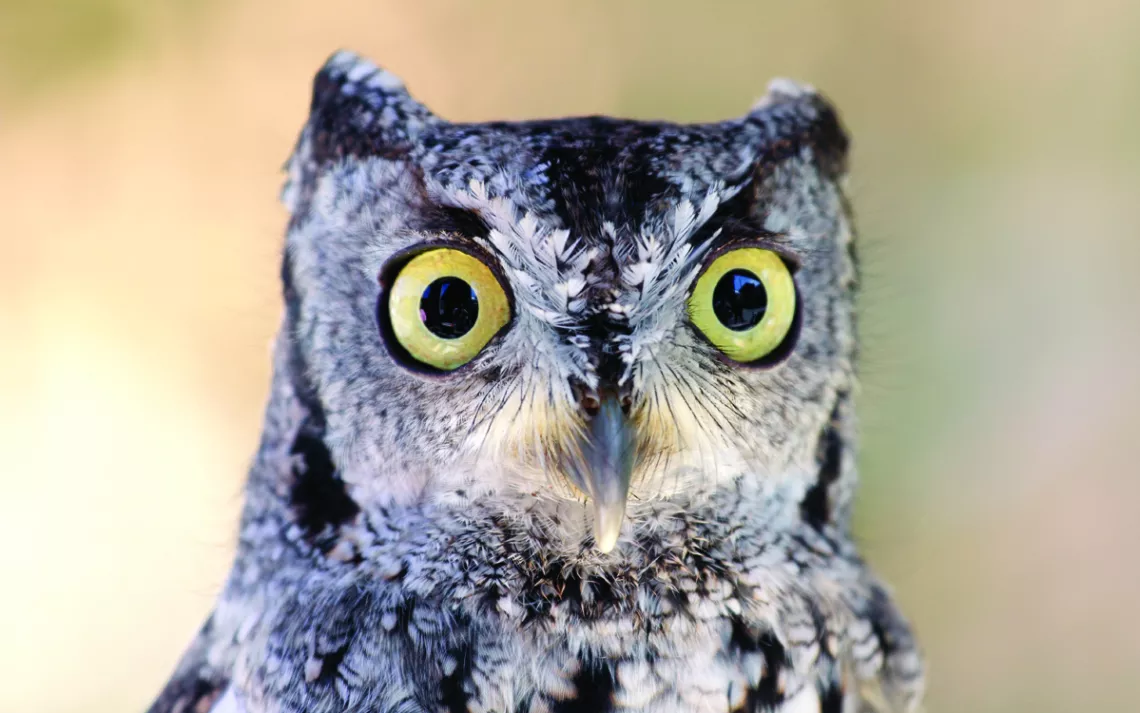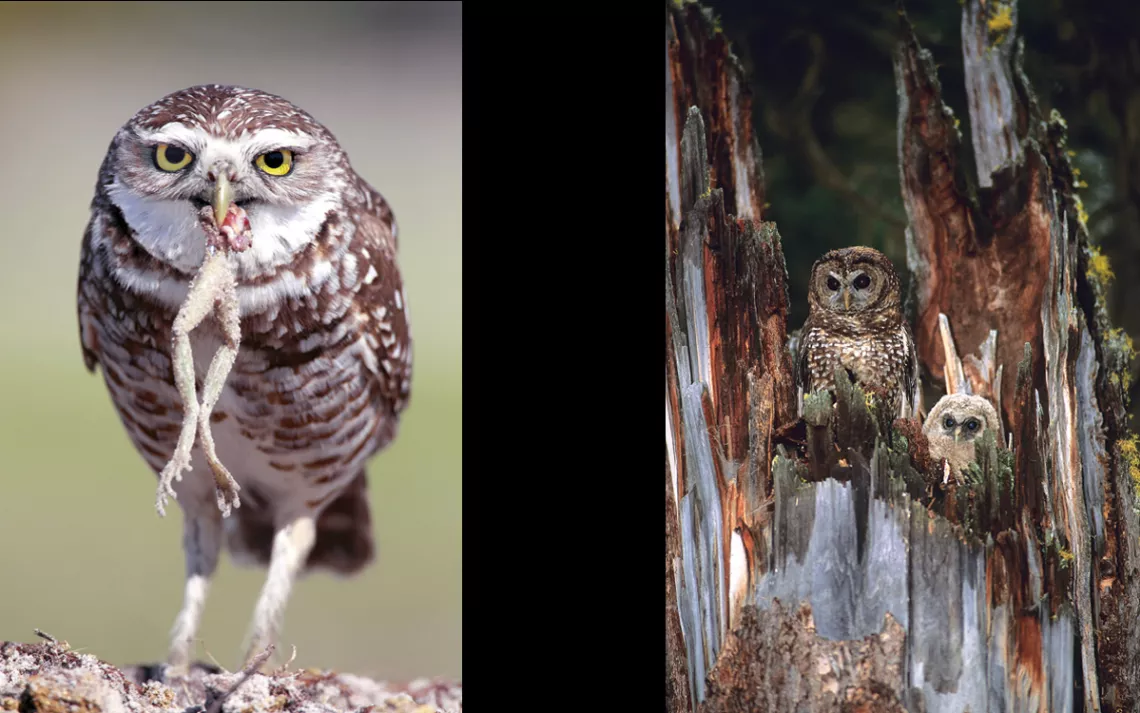Nature’s Wide-Eyed Riddle
David Tipling’s owl collection celebrates one of the wild’s most enigmatic birds
Photos courtesy of Yale University Press and David Tipling. From The Enigma of the Owl by Mike Unwin and David Tipling.
Few avian species have inspired such rich iconography, across so many cultures and generations, as the owl. For some Native American nations, such as the Aztecs and the Ojibwes, the bird augured bad news, bad spirits, or even death. In ancient Greece, it was the symbol of power, appearing in mythology with Athena, the goddess of wisdom. The depiction of an owl in profile shows up in ancient Egyptian language as a hieroglyph (for the letter m). In Harry Potter, owls are messengers trafficking between the realms of the real and the fantastic.
There are well over 200 species of owls, and they come in a kaleidoscope of colors, sizes, and habitats, many of which Mike Unwin and David Tipling have collected in the wonderfully curated The Enigma of the Owl: An Illustrated Natural History (Yale University Press, 2017).
“What was very evident when we were doing the picture research for the book is that there is still so much to photograph,” Tipling, a wildlife photographer and the photo editor of The Enigma of the Owl, said in an interview. “We’ve only really scratched the surface of the potential for capturing owl behavior and capturing pictures of them in their habitat.”
The book’s title is a gesture to the peculiar ways in which the owl has adrenalized human imagination for centuries: The species is nature’s consummate wide-eyed riddle. Owls are mostly nocturnal; as creatures of the dark with piercing, unblinking eyes and a nearly complete face, they have long served as vessels for human wonder, into which societies across the globe have poured their folklore, fascination, and legend. They are also ubiquitous: Owls are found on every continent with the exception of Antarctica, living in forests, deserts, and tundras. While common, they face dangers ranging from habitat loss due to agriculture to pesticides to climate change—all of which The Enigma of the Owl addresses while managing to account for upward of 53 species in vivacious photography.
To present as complete a collection as possible, Tipling curated photos from his own portfolio as well as from a variety of other wildlife photographers. His goal was to choose images with styles that complement one another and that convey the many different characteristics of each species. He then sorted the images into six bioregions—North America, Central and South America, Eurasia, Africa, Southern Asia and Australasia, and Oceanic Islands—delivering a sweeping view not only of the owl itself, but also of its many habitats, behaviors, and fascinating quirks.
In some of the shots, the birds are majestic—as in the case of a white barn owl Tipling photographed with an 18mm lens late at night as it swooped toward its nest, in which it seemingly materializes out of the inky dark in full wingspan like marble in motion. In others, they’re just plain goofy—you can almost hear a Eurasian pygmy owl sigh in exasperation (“Why this? Why me?”) as it tries to wiggle out of a snow divot in Finland, courtesy of bird photographer and owl specialist Jari Peltomäki.
The key to photographing the birds, Tipling says, is getting to know each one individually, as well as its habits. Owls often hunt in the same place day after day and use the same perches. “With barn owls, every winter I get to know the individual birds, where they’re hunting, where they’re likely to be hunting depending on wind direction and the weather,” he says. “So it’s a lot of looking and doing a lot of field research, and a lot of planning.”
Getting the shots is the easy part, Tipling says. The process before that involves hours-long stakeouts by day and night, studying their day-to-day behavior, and setting up military-style camouflage netting to remain unseen. In the case of the white barn owl Tipling photographed, he was already familiar with the particular nesting site in the eaves of the barn and had returned to it every year to photograph birds there. Before that owl nested at the site, he had affixed a wooden camera dummy nearby so that the owl became accustomed to the object. Once the birds had their young, he swapped out the dummy for a real camera.
“The shot is taken in 500ths of a second,” he says, “but the actual shot took a few weeks to get.”
Tipling has been fascinated with birds since he was nine years old. He grew up in the county of Kent, on the edge of the English countryside, and spent most of his childhood running in the fields, fishing, and birdwatching. Birds were so common to the area back then, birdsong formed a kind of soundtrack to his earliest memories. At one point his mother gave him a book, originally published in 1954, called The Observer’s Books of Birds’ Eggs, which featured vivid descriptions and illustrations.
As a young teenager, Tipling and his father shared an interest in motor racing and would often frequent the Brands Hatch circuit in Kent. He got hold of a camera one day and took it with him to document the cars; a fascination with photography was born. When he wasn’t taking pictures of the cars, he hit the fields to photograph birds. By the time he was in his late teens, the pastime turned into a passion. He knew he wanted to be a wildlife photographer.
For about a decade after school, Tipling held various jobs, including a stint as an auditor at a financial firm investigating internal fraud. But his love for photography was never far. He eventually started a photo agency that at one point represented around 40 photographers including himself, and he has published several books, from Top Birding Spots in Britain & Ireland (Harper Collins, 1996) to his 2013 monograph collection, Owls (Evans Mitchell Books) with Jari Peltomäki, and Birds & People with Mark Cocker (Random House, 2013).
Tipling uses a Nikon D810 and a D500 most often and a range of lenses, everything from wide angle to telephoto. His main owl lens is a 400mm. He relies on flash or artificial lighting to capture the owls at night. During the day, he prefers low light.
Tipling works on behalf of a variety of conservation groups, documenting the illegal trapping of birds in the countries surrounding the Mediterranean Sea. A few years after Jonathan Franzen published an article in the New Yorker on the illegal trapping of birds in Cypress (“Emptying the Skies,” 2010), Tipling was tasked to shoot the bird sequences for a documentary film of the same name, based on the article.
For Tipling, the slow, steady decline of so many bird species due to trapping, intensive agriculture, use of chemicals that impact insect and bird populations, and other factors—and the silence that comes with that decline—has been startling.
“The numbers of birds that are being trapped and killed every year is astonishing,” he says. “Here in the UK, so many species are in decline. When I was a schoolboy, you’d hear any number of turtle doves on your way to school. Now, you’re lucky if you hear one singing in spring or summer.”
“The cuckoo in English folklore was once the soundtrack to everyone’s lives in the countryside,” he says. “But now I struggle to take my children out to hear a cuckoo calling in spring. I guess many people are not aware of what we’re losing because they don’t have that awareness of the natural world around them. When I go to the wilder parts of Europe, like in Spain, where there is no agriculture, there are so many birds everywhere. It reminds you of what it was like back home so long ago.”
 The Magazine of The Sierra Club
The Magazine of The Sierra Club
